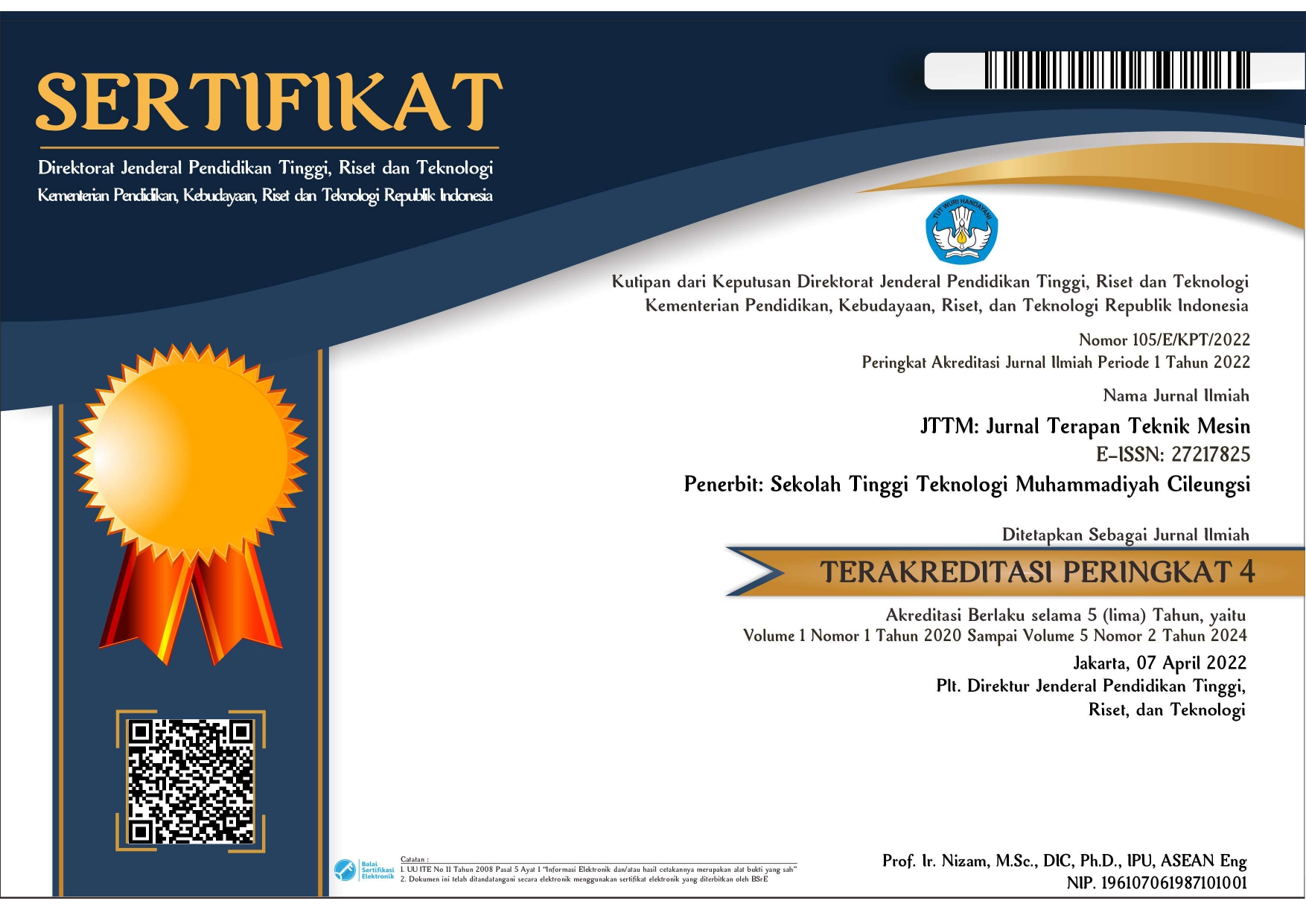Material analysis of tool feed on scrap machines using the vibration method
Abstract
Flexibility comes from the cutting force generated when the workpiece and tool react and are moved to different areas of the scrap machine. The chisel will get damaged as a result. The material and cutting speed that are used can cause damage. Given this, further studies employing the vibration method are required to determine the ways in which material affects the speed at which scrap is chopped. PVC, iron, and aluminum 5052 were the materials used in this investigation. The cutting rotational speeds varied from 32 to 80 m/min. To measure vibration, the accelerometer is positioned along the x, y, and z axes. The measurement outputs of the accelerometer are connected to the FFT Analyzer, which performs analysis using Matlab. When comparing cutting speeds above or below 50 m/min, the research results indicate that the x-axis has the largest amplitude and the most form variants. The most widely used material is PVC, which is followed by iron and aluminum. This is because, unlike aluminum and iron, which have microstructures in the form of crystal grains, PVC is a thermoplastic polymer with a microstructure made of chain molecules. Because all of the cutting energy is used in the frictional action between the chip and the workpiece when the tool is being used, the high frequency is the result. As a result, the friction on the sliding plane is breaking up atomic or molecular bonds. Additionally, the cutting force exerts a significant amount of pressure on the tool's wearing active surface
Copyright (c) 2024 Ahmad Kharis Surnadi, Subekti Subekti

This work is licensed under a Creative Commons Attribution-NonCommercial 4.0 International License.











